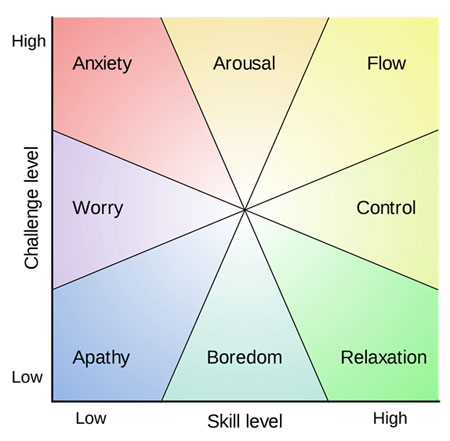Volume 2, Issue 10
Being a friend to everyone is conducive to the Zone
Flow state, aka the Zone, is behind the purpose of The Human Effectiveness Institute. In last week’s post we focused on the internal maintenance of a good mood as a precursor to the autotelic (doing it for its own sake not for outcome) Flow state. Self-management of attitude for maximum performance was the point of that post. In this post, we focus on the external world and the ways in which it can be leveraged to help you and your team into Flow.
How do personal interactions lead to — or away from — the Zone?
When someone frustrates you or otherwise pulls you out of your good mood, investigate first how you played along with the event so that it was both of you causing the bad mood. This construct will get you quickly to the levers you can pull to effectively work on that relationship. And the best way to carry out such a long-term plan (relationships are not short-term situations) is as a friend, not as an enemy nor as a distant party.
Resist the temptation to demonize the other person. Realize they got to where they are through a series of events that were perhaps unfortunate and be glad your corresponding events left you with more visibility and perhaps less closed-mindedness. Be open to all possibilities including that your behavior was the progenitor of the events you did not enjoy.
Resist the temptation to teach other people — that is not what they want. If they want your advice, they’ll ask for it. What they want the most from you is simply and truly to be their friend. So what does that mean?
- Warm, good feelings (love) — from the heart;
- You tell them the truth — in a way that helps not hurts;
- You want them to succeed — even if they succeed ahead of you;
- You share fairly with them;
- You encourage them;
- You help them see the brighter side. People want to be in a good mood — bring yours and they will join you — that is leadership.
- Help them find creative outlets that might have higher probability of success than their current time use.
So being a friend really entails a lot. It is the optimal underpinning to any relationship, including relationships with relatives. It helps make the Zone happen for you, your friends, and sometimes among whole teams of people.
Best to all,
Bill
PS — Ed Keller and Brad Fay of KellerFay have just come out with their new book THE FACE-TO-FACE BOOK: WHY REAL RELATIONSHIPS RULE IN A DIGITAL MARKETPLACE. The revelation of the book is that face-to-face conversations still rule in terms of volume and in terms of credibility, despite all the press about social media. The practical application is about how to use not only social media but everything else that has been proven to work to drive positive conversations including face-to-face. The book includes case studies naming brand names such as Kraft and General Mills. Learn what works. KellerFay not only talks the talk but walks the walk as proven by the way they are marketing the book on Facebook, for example, where you can get a free excerpt at http://on.fb.me/IPgVLE; Win a Free Copy http://on.fb.me/IqzisA. The book is available on Amazon, BN.com, and 800ceoread.

